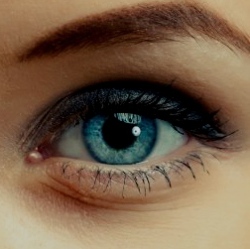
In future you may not even need eyes to see. Next year, a blind person in Australia will be the first to receive “bionic eyes” that bypass most of the visual system entirely. Instead, a camera mounted on a pair of glasses will feed information about the world directly to the brain.
The breakthrough should help restore vision in people without a working retina. “You don’t need an eyeball at all,” says Arthur Lowery at Monash University in Clayton, Victoria, who is developing the bionic eye.
The plan is to implant up to 11 small tiles, each loaded with 43 electrodes, into areas of the brain that deal with vision. When these areas are stimulated, people see flashes of light.
Lowery believes that each electrode could create a dot of light that is similar to seeing one pixel. In total, the tiles will provide around 500 pixels, enough to create a simple image. Although this resolution is far cruder than the 1 to 2 million pixel image a normal eye can produce, it should restore the basic elements of sight.
Images picked up by the camera will be sent to a pocket-sized processor worn by the user. This device will pull out the relevant parts of an image and send it to the tiles. “The processor is like a cartoonist,” says Lowery. “It has to represent a complex situation with minimal information.”
A face could be recreated with just 10 dots, Lowery says. “It doesn’t sound like much but there’s more information in that than you’d think.” He recalls a blind receptionist who couldn’t tell if someone was coming or going, so never knew whether to say hello or goodbye. “If there’s a dot moving away from you, you stop talking,” he says.
The first volunteers will have recently lost their sight due to injury, as the device may not work for those blind since birth. If all goes to plan, the volunteers will wake up with a crude sense of vision, “like a John Logie Baird television from the 1920s”, says Lowery.
